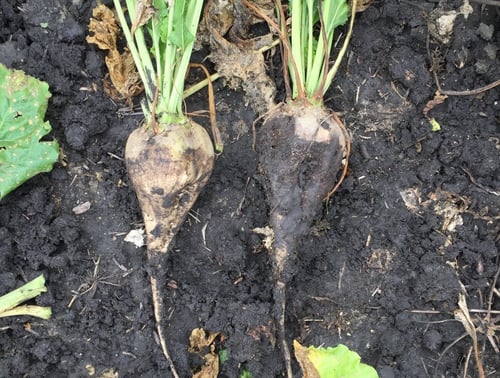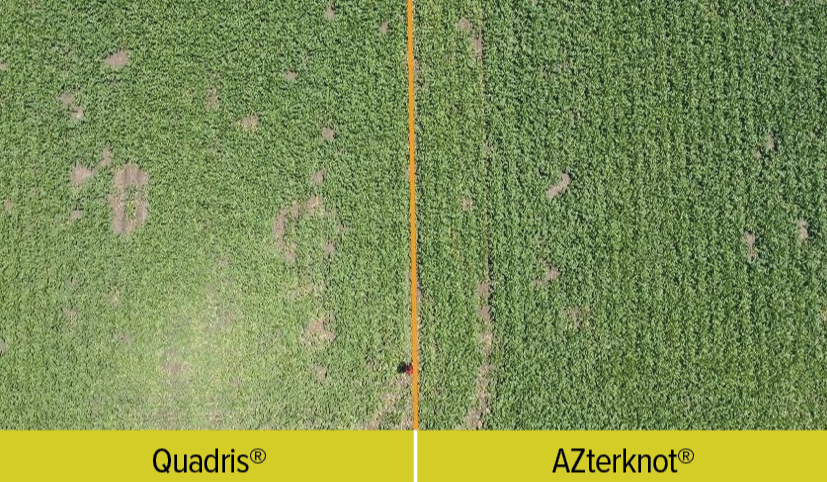February 9, 2024 - Sugarbeet production faces numerous challenges, with diseases posing a significant threat to yield and quality. Among these, Rhizoctonia stands out as a particularly formidable adversary.
Rhizoctonia solani, the agent of Rhizoctonia root rot, can cause significant damage to sugarbeet crops, leading to reduced yields and compromised root quality. In this blog post, we'll explore effective strategies for combating Rhizoctonia in sugarbeet fields, emphasizing a holistic approach that integrates cultural, chemical, and biological methods.

AZteroid® FC 3.3 treated (left) vs untreated (right). Rhizoctonia infection is clear in the untreated sugarbeet.
Rhizoctonia solani is a soil-borne fungal pathogen that thrives in warm, moist conditions. It infects sugarbeet plants through the roots, causing lesions and rot that impede nutrient uptake and ultimately reduce yield. Rhizoctonia is known for its ability to survive in soil for extended periods, making it a persistent threat in sugarbeet-growing regions. Rhizoctonia also infects several crops that are grown in rotation to sugarbeets, making crop rotation a less than ideal solution for Rhizoctonia management.
Many sugarbeet growers have found using an in-furrow fungicide with their starter fertilizer to be the most effective way to prevent and control Rhizoctonia early in the season. Vive recommends using AZteroid FC 3.3 fungicide due to its best-mixing fertilizer compatibility, consistent performance, and convenience to the grower.
In fields with particularly high Rhizoctonia pressure, growers may decide to come back with a foliar fungicide around the 4-8 leaf stage to suppress and prevent any infections. In this instance, growers will turn to AZterknot®. A biostimulant + chemical fungicide, AZterknot delivers a dual boost of plant health and disease control to growing sugarbeets, preventing disease infections, optimizing growth efficiency, and increasing stress tolerance, often leading to higher sugar content.

Combatting Rhizoctonia in sugarbeets requires a multifaceted approach that addresses the disease from various angles. Growers can effectively mitigate the impact of Rhizoctonia on sugarbeet yields and ensure high-quality sugar content by protecting their sugarbeets with an in-furrow and/or foliar fungicide. Stay vigilant, stay proactive, and stay ahead of Rhizoctonia to protect your sugarbeet crops and maximize sugar yields!
